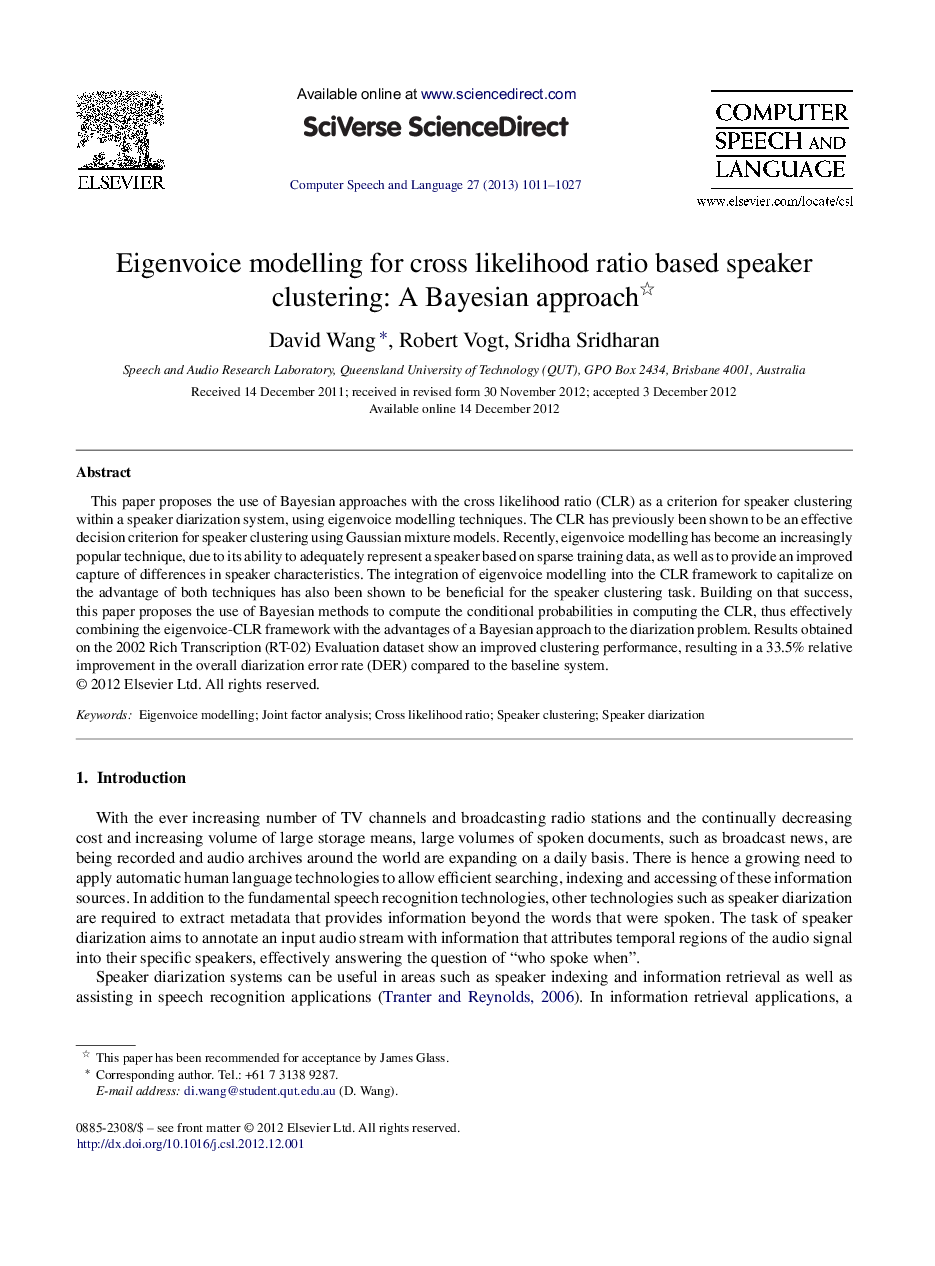| کد مقاله | کد نشریه | سال انتشار | مقاله انگلیسی | نسخه تمام متن |
|---|---|---|---|---|
| 558330 | 874902 | 2013 | 17 صفحه PDF | دانلود رایگان |

This paper proposes the use of Bayesian approaches with the cross likelihood ratio (CLR) as a criterion for speaker clustering within a speaker diarization system, using eigenvoice modelling techniques. The CLR has previously been shown to be an effective decision criterion for speaker clustering using Gaussian mixture models. Recently, eigenvoice modelling has become an increasingly popular technique, due to its ability to adequately represent a speaker based on sparse training data, as well as to provide an improved capture of differences in speaker characteristics. The integration of eigenvoice modelling into the CLR framework to capitalize on the advantage of both techniques has also been shown to be beneficial for the speaker clustering task. Building on that success, this paper proposes the use of Bayesian methods to compute the conditional probabilities in computing the CLR, thus effectively combining the eigenvoice-CLR framework with the advantages of a Bayesian approach to the diarization problem. Results obtained on the 2002 Rich Transcription (RT-02) Evaluation dataset show an improved clustering performance, resulting in a 33.5% relative improvement in the overall diarization error rate (DER) compared to the baseline system.
► Cross likelihood ratio (CLR) is a robust decision criterion for speaker clustering.
► Recently, eigenvoice modelling techniques have become increasingly popular.
► It is therefore beneficial to integrate eigenvoice modelling into a CLR framework.
► Computing the CLR using Bayesian methods provide further improvements.
Journal: Computer Speech & Language - Volume 27, Issue 4, June 2013, Pages 1011–1027